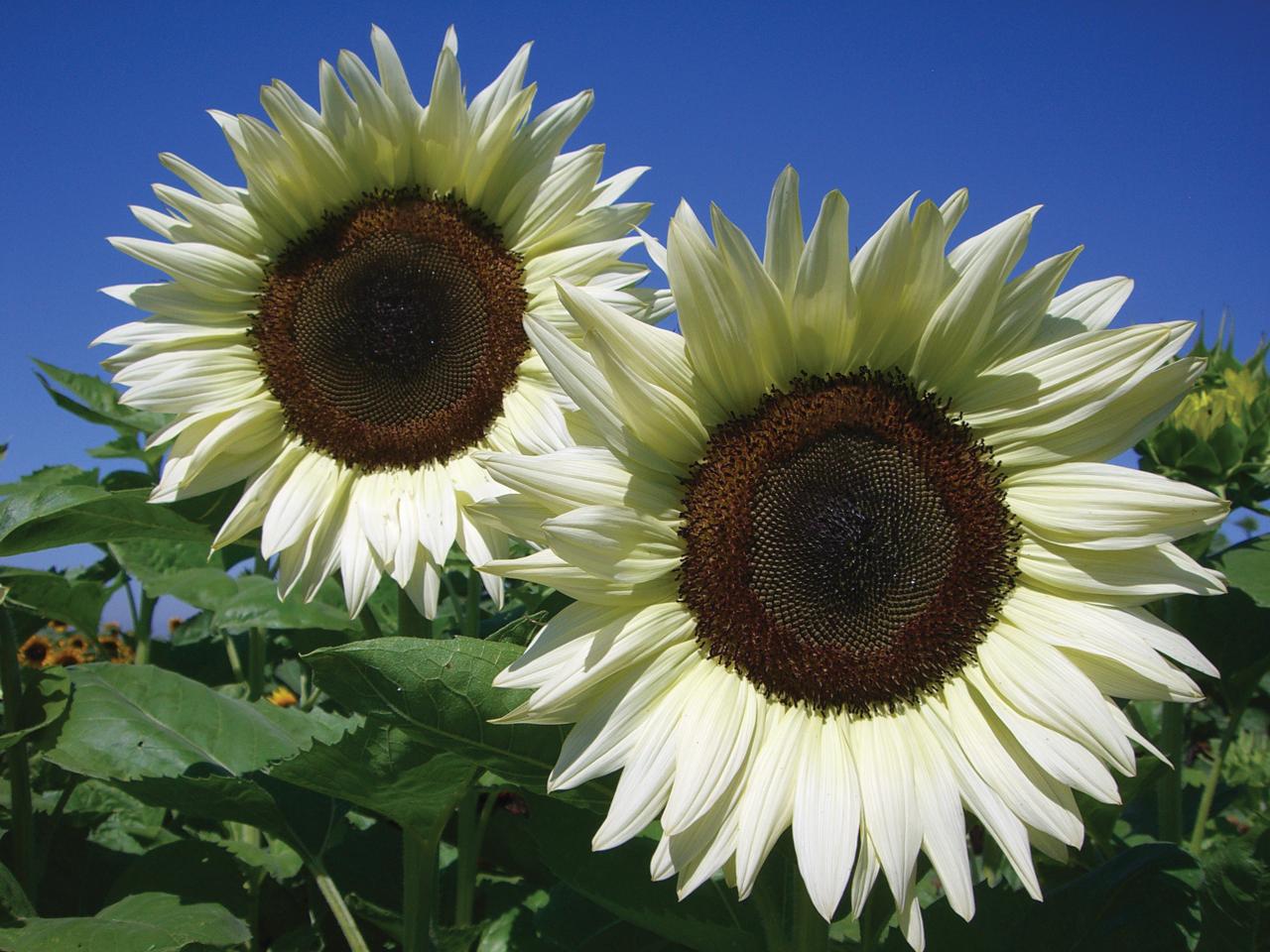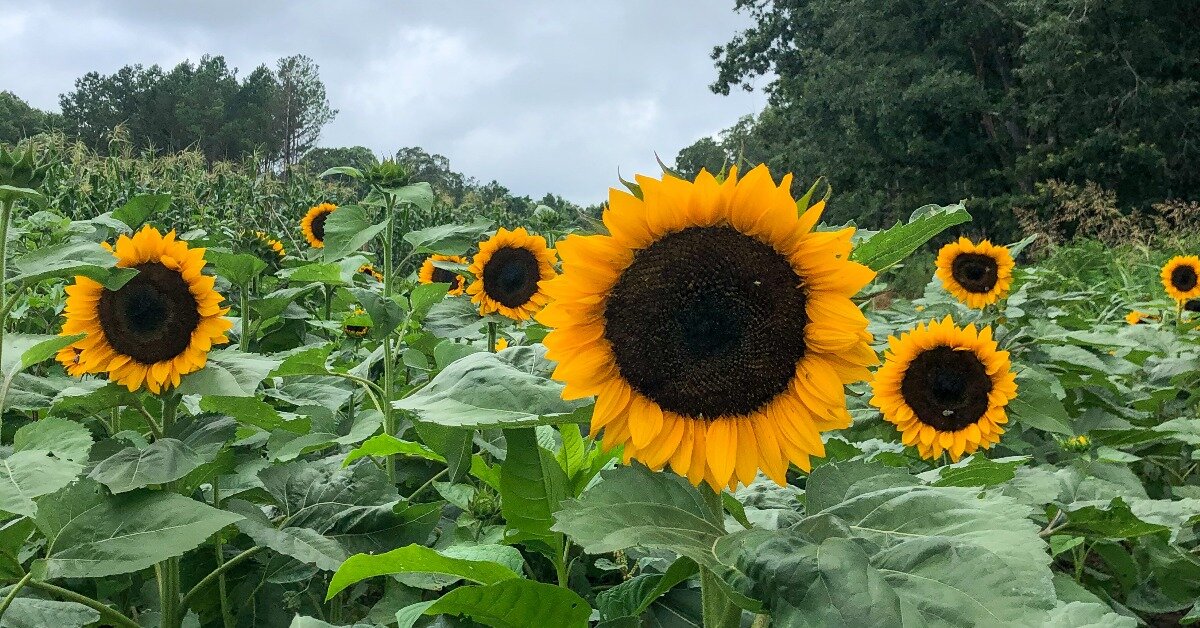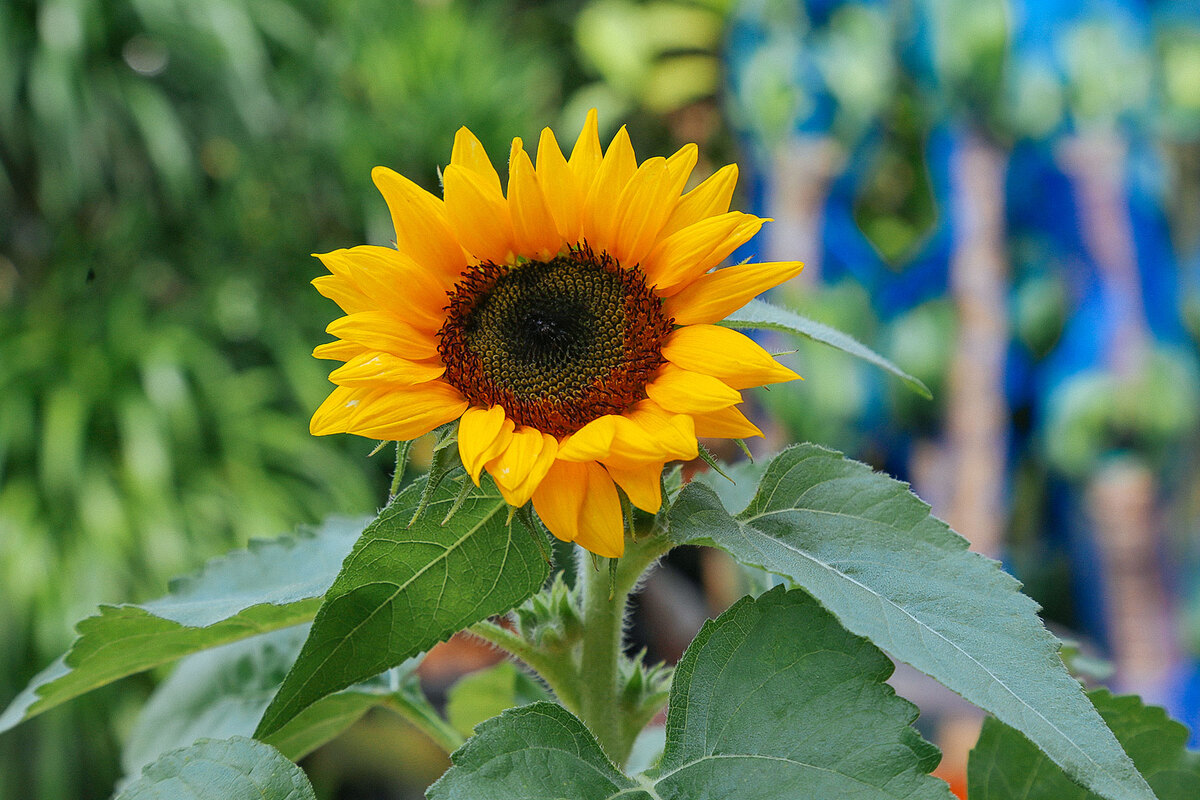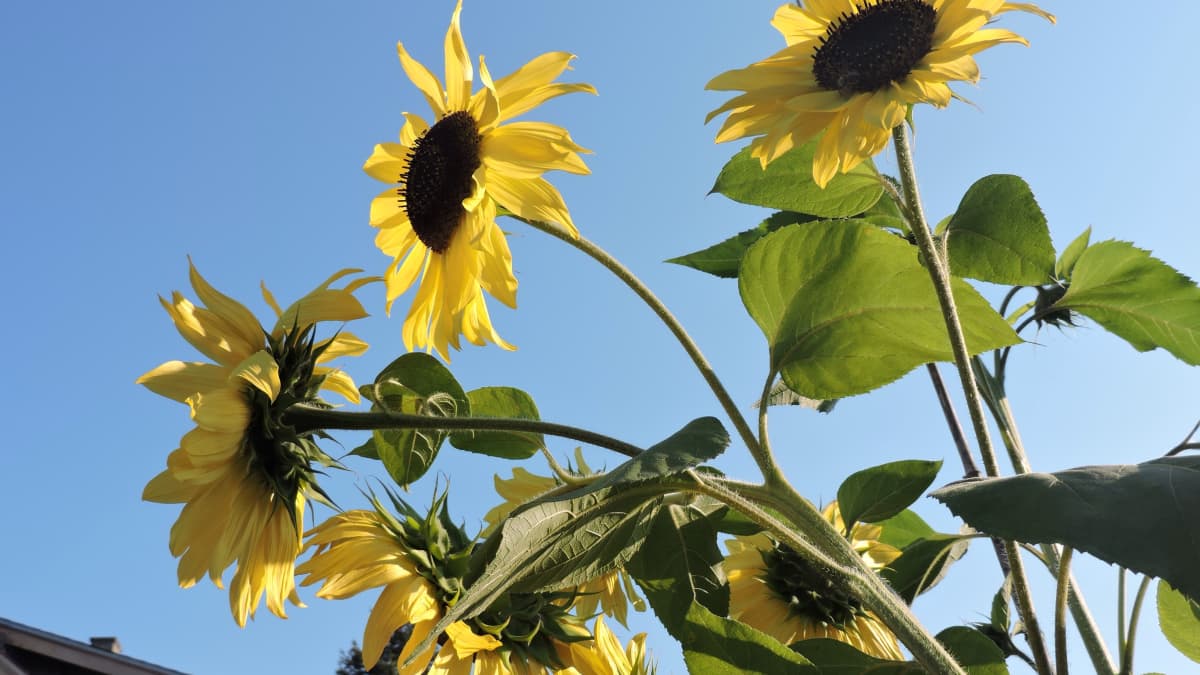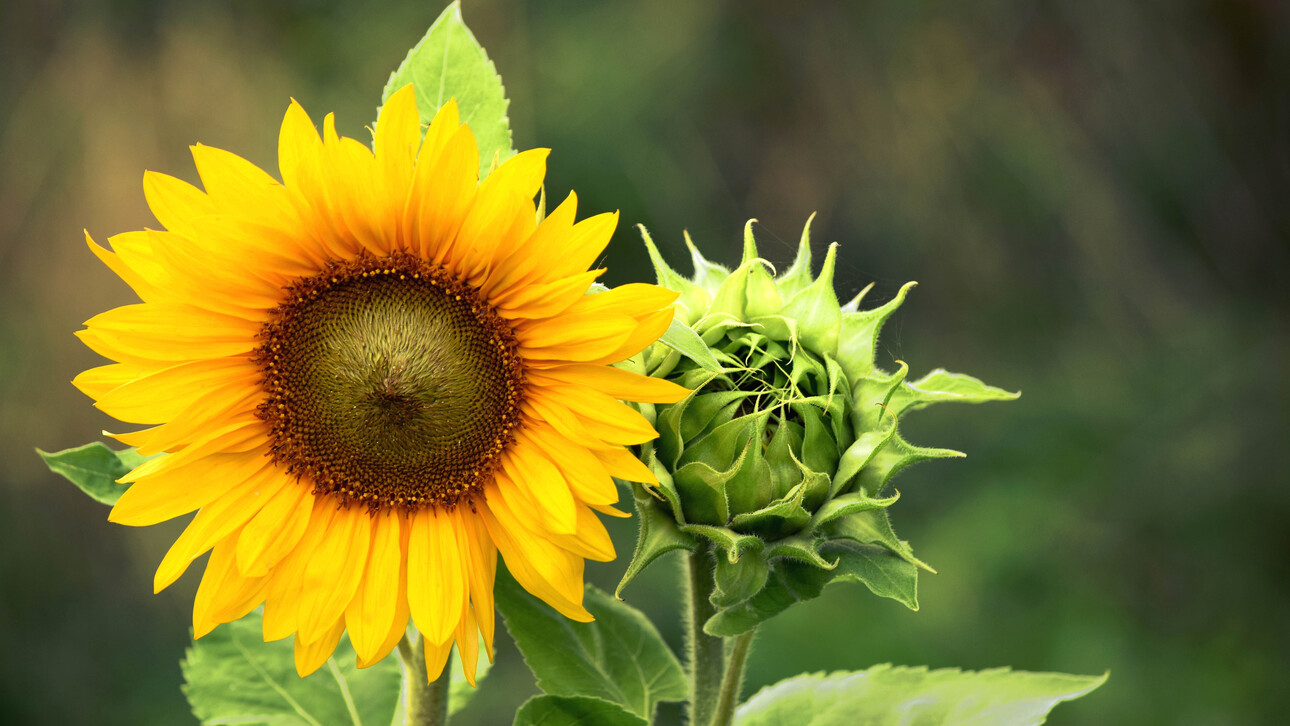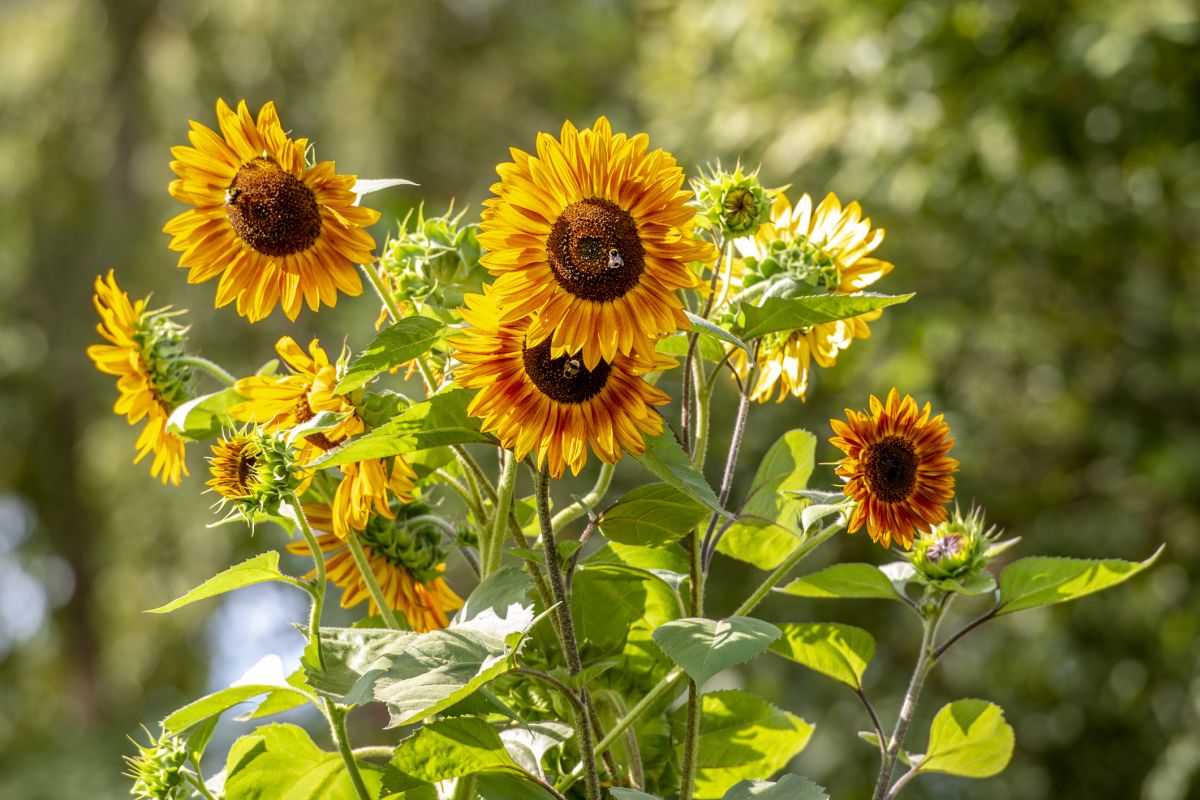Home>Types of Gardening>Ornamental Gardening>Where To Plant Sunflowers
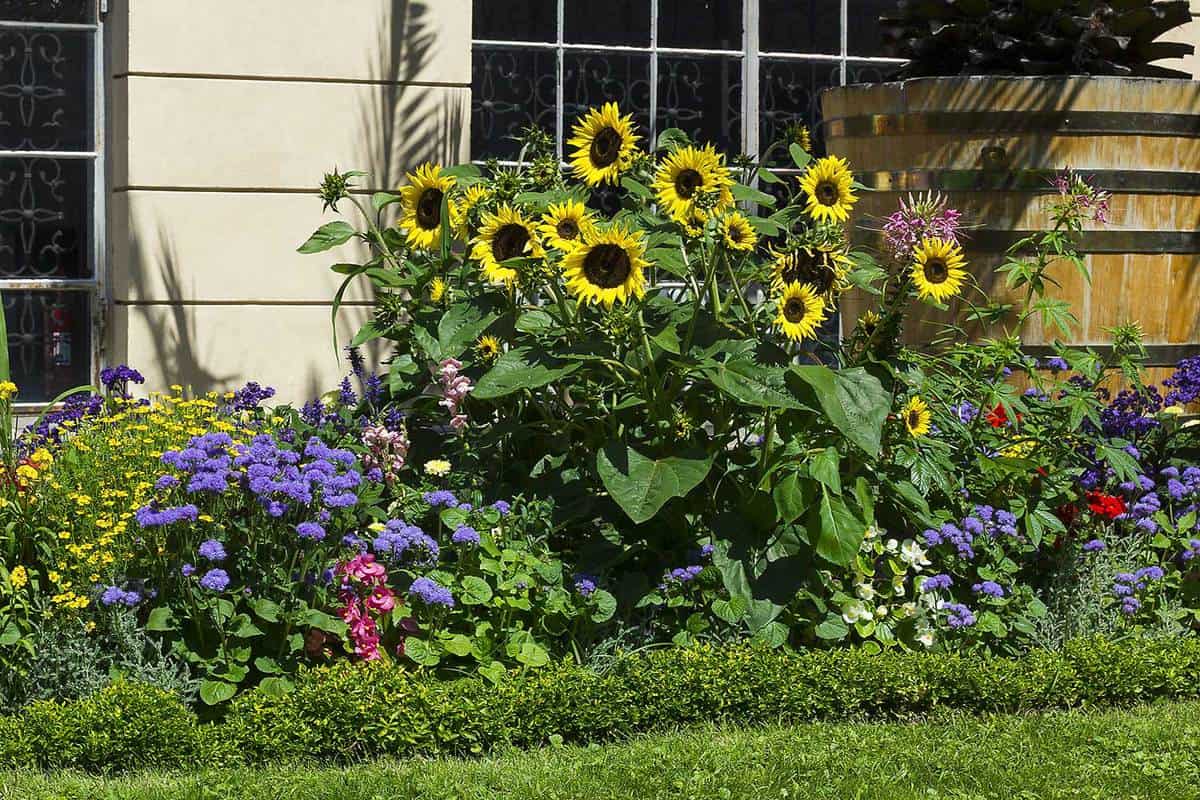

Ornamental Gardening
Where To Plant Sunflowers
Modified: February 7, 2024
Discover the best locations for planting sunflowers in your ornamental garden. Learn how to create a stunning display with our expert tips and advice.
(Many of the links in this article redirect to a specific reviewed product. Your purchase of these products through affiliate links helps to generate commission for Chicagolandgardening.com, at no extra cost. Learn more)
Table of Contents
Introduction
Welcome to the vibrant world of ornamental gardening, where the majestic sunflower stands as a symbol of radiant beauty and natural splendor. Sunflowers, with their captivating charm and imposing presence, have captivated the hearts of gardeners and nature enthusiasts for centuries. In this guide, we will delve into the art of planting sunflowers, exploring the key factors that contribute to their growth and vitality. Whether you are a seasoned gardener or a novice enthusiast, understanding the fundamental requirements for cultivating these sunny blooms will pave the way for a bountiful and picturesque garden.
Sunflowers, scientifically known as Helianthus annuus, are renowned for their resplendent blooms and towering stature, making them a striking addition to any garden landscape. From their vibrant hues to their ecological significance, these iconic flowers offer a myriad of benefits, including providing nourishment for pollinators and adding a touch of warmth to the surrounding environment.
As we embark on this horticultural journey, we will unravel the essential considerations for planting sunflowers, encompassing their sunlight requirements, soil conditions, watering needs, spacing and layout, as well as strategies for protecting them from pests and diseases. By gaining insights into these facets, you will be equipped with the knowledge needed to nurture thriving sunflowers and witness the transformation of your outdoor space into a captivating haven of natural beauty.
So, let's embark on this enchanting adventure and unlock the secrets to cultivating flourishing sunflowers, allowing their golden petals to illuminate your garden and infuse it with an aura of joy and vitality. Whether you seek to adorn your landscape with their resplendent blooms or harvest their nutritious seeds, the journey of planting sunflowers is a delightful endeavor that promises to enrich your connection with nature and elevate the allure of your outdoor sanctuary.
Sunlight Requirements
When it comes to cultivating vibrant and robust sunflowers, adequate sunlight is paramount to their growth and development. Sunflowers are renowned for their heliotropic nature, a characteristic that allows them to track the sun’s movement throughout the day, maximizing their exposure to sunlight. As such, it is imperative to select a planting location that receives ample sunlight, typically ranging from six to eight hours of direct sunlight daily.
These sun-loving blooms thrive in full sun, basking in the warm rays that fuel their photosynthetic processes and promote robust stem and foliage growth. When choosing a site for planting sunflowers, prioritize areas with unobstructed access to sunlight, such as open fields, garden beds, or spacious yards. By providing them with the requisite sunlight, you pave the way for vigorous growth and the development of vibrant, sizable flower heads that exude a radiant allure.
Moreover, the orientation of the planting area plays a pivotal role in optimizing sunlight exposure for sunflowers. Ideally, position the planting site in a north-south direction to ensure that the sunflowers can effectively track the sun’s trajectory from east to west, thereby maximizing their solar intake throughout the day. This strategic orientation empowers the sunflowers to harness the sun’s energy efficiently, bolstering their overall health and vitality.
As you embark on the journey of planting sunflowers, embrace the sun’s benevolent rays as an indispensable ally in nurturing these iconic blooms. By honoring their inherent need for sunlight, you set the stage for a flourishing garden adorned with resplendent sunflowers that stand as a testament to the profound beauty of nature’s radiant embrace.
Soil Conditions
Just as sunlight serves as a vital source of energy for sunflowers, the soil in which they are planted plays a crucial role in shaping their growth and overall well-being. When selecting a site for planting sunflowers, prioritize well-drained, loamy soil with a slightly acidic to neutral pH level, typically ranging from 6.0 to 7.5. This optimal soil composition fosters an environment conducive to robust root development and efficient nutrient uptake, laying the groundwork for healthy and resilient sunflowers.
Furthermore, the soil should exhibit good fertility, enriched with organic matter to support the sunflowers’ nutritional needs throughout their growth stages. Prior to planting, consider amending the soil with compost or well-rotted manure to enhance its fertility and structure, providing the sunflowers with a nurturing foundation for their root systems to thrive.
It is essential to ensure that the soil is well-aerated, as compacted or waterlogged soil can impede root growth and lead to detrimental consequences for the sunflowers. Before planting, assess the soil’s drainage capabilities and address any potential issues to create an optimal growing environment for these majestic blooms.
As you prepare the soil for planting, bear in mind that sunflowers are relatively resilient and can adapt to various soil conditions, including sandy or clay soils, as long as adequate amendments are made to improve their texture and fertility. By attending to the soil’s composition and structure, you empower the sunflowers to establish strong roots and thrive in an environment that nurtures their innate vitality.
Embrace the art of soil stewardship as you embark on the journey of planting sunflowers, recognizing that the earth beneath your feet serves as a nurturing cradle for these iconic blooms. By tending to the soil with care and mindfulness, you pave the way for a flourishing garden adorned with sunflowers that stand as a testament to the harmonious synergy between nature’s elements.
Watering Needs
Water, the elixir of life, holds profound significance in nurturing the growth and vitality of sunflowers. As stalwart symbols of natural splendor, sunflowers rely on consistent and adequate watering to thrive and manifest their resplendent blooms. When tending to these majestic blooms, it is essential to strike a harmonious balance in meeting their hydration needs, ensuring that they receive ample moisture without succumbing to waterlogged conditions.
Upon planting sunflower seeds or seedlings, prioritize establishing a consistent watering regimen to support their initial stages of growth and root establishment. During this critical phase, maintain a moist, but not saturated, soil environment to facilitate the emergence of robust roots and the development of sturdy seedlings. As the sunflowers mature, gradually transition to a regular watering schedule, keeping the soil evenly moist without allowing it to become excessively dry between watering sessions.
When determining the frequency of watering, consider environmental factors such as temperature, humidity, and rainfall patterns, adjusting your watering regimen accordingly to accommodate the sunflowers’ evolving needs. In periods of intense heat or prolonged dry spells, be vigilant in providing supplemental watering to shield the sunflowers from moisture stress and bolster their resilience against environmental challenges.
While diligent watering is essential for nurturing sunflowers, it is equally crucial to avoid overwatering, which can lead to root rot and other detrimental consequences. Prioritize mindful observation of the soil’s moisture levels and the sunflowers’ response to watering, allowing these cues to guide your approach and promote the optimal balance of hydration for their well-being.
Embrace the role of a nurturing steward as you tend to the watering needs of sunflowers, recognizing that the gift of water serves as a vital sustenance that fuels their journey toward resplendent bloom. By honoring their need for moisture with attentiveness and care, you contribute to the flourishing tapestry of nature’s beauty, where sunflowers stand as luminous testaments to the harmonious dance of earth, water, and sunlight.
Spacing and Layout
When embarking on the endeavor of planting sunflowers, thoughtful consideration of spacing and layout is instrumental in orchestrating a visually captivating and thriving garden landscape. Sunflowers, with their commanding presence and expansive blooms, necessitate ample space to unfurl their resplendent petals and reach towering heights, captivating the beholder with their majestic allure.
Before sowing sunflower seeds or transplanting seedlings, deliberate on the layout of your garden or landscape, envisioning the spectacle of sunflowers in full bloom and charting a course for their optimal growth and visual impact. As a general guideline, allocate approximately 1 to 3 feet of spacing between individual sunflowers, depending on the specific variety and its anticipated dimensions at maturity.
For larger cultivars or those renowned for producing sizable flower heads, err on the side of generosity when determining spacing, allowing the sunflowers ample room to stretch and thrive without encroaching upon neighboring plants. This strategic approach not only fosters unhindered growth and ample airflow around the sunflowers but also contributes to a visually striking display that accentuates their grandeur.
Moreover, consider the orientation and arrangement of sunflowers within the garden landscape, leveraging their towering stature and heliotropic nature to create captivating visual dynamics. Position sunflowers at the rear or periphery of garden beds or borders, where their imposing height can serve as a stunning backdrop for smaller ornamental plants, infusing the landscape with a sense of depth and drama.
Alternatively, embrace the art of interplanting, integrating sunflowers into mixed plantings or ornamental ensembles to interweave their radiant blooms with complementary foliage and floral companions. By harmonizing the spacing and layout of sunflowers with the overarching design of your garden, you orchestrate a symphony of natural beauty that celebrates the splendor of these iconic blooms.
As you deliberate on the spacing and layout of sunflowers, envision the garden landscape as a canvas awaiting the vibrant strokes of nature’s artistry. By embracing thoughtful design and spatial orchestration, you invite the sunflowers to flourish in a tapestry of beauty, where their resplendent blooms stand as luminous testaments to the harmonious dance of earth, water, and sunlight.
Protection from Pests and Diseases
As guardians of natural beauty, sunflowers are not immune to the perils posed by pests and diseases that can jeopardize their vitality and diminish their ornamental appeal. To safeguard these iconic blooms and preserve their resplendent allure, it is imperative to implement proactive measures for protecting sunflowers from potential threats posed by pests and diseases, nurturing a garden landscape that thrives in harmony with nature.
One of the primary strategies for safeguarding sunflowers involves promoting biodiversity within the garden ecosystem, fostering a balanced and resilient environment that naturally mitigates pest pressures. By incorporating a diverse array of plants and flowers, you attract beneficial insects and pollinators that serve as allies in combating pest populations, contributing to a harmonious coexistence that fortifies the sunflowers’ defenses against potential infestations.
Furthermore, practicing attentive garden hygiene, such as removing debris and spent foliage, helps mitigate the risk of disease proliferation and diminishes potential hiding places for pests. Regular monitoring of the sunflowers for signs of pest activity or disease symptoms empowers you to intervene promptly, addressing emerging issues before they escalate and compromise the health of the plants.
Embrace the art of companion planting, strategically integrating pest-repellent and disease-resistant plants alongside sunflowers to fortify their natural defenses and create a symbiotic alliance that safeguards the garden ecosystem. Plants such as marigolds, lavender, and dill possess inherent pest-deterring properties, serving as valuable allies in protecting sunflowers from potential threats.
When confronted with pest infestations or disease outbreaks, explore organic pest control methods and disease management strategies, such as neem oil sprays, insecticidal soaps, and botanical extracts, to address the issues while minimizing the impact on beneficial organisms and the broader garden ecosystem. By prioritizing environmentally conscious approaches, you uphold the delicate balance of nature while nurturing the flourishing beauty of sunflowers.
As you embark on the journey of protecting sunflowers from pests and diseases, recognize the profound interconnectedness of the garden ecosystem and the pivotal role you play as a steward of its vitality. By cultivating a landscape that honors the resilience and splendor of sunflowers, you contribute to a tapestry of natural beauty where these iconic blooms stand as luminous testaments to the harmonious dance of earth, water, and sunlight.
Conclusion
As we draw the curtain on our exploration of planting sunflowers, we are reminded of the profound beauty and natural splendor that these iconic blooms bestow upon the garden landscape. From their heliotropic elegance to their commanding stature, sunflowers stand as enduring symbols of vitality and radiance, captivating the hearts of gardeners and nature enthusiasts alike.
Throughout our horticultural journey, we have delved into the fundamental considerations for nurturing sunflowers, from their sunlight requirements and soil conditions to watering needs, spacing and layout, as well as strategies for protecting them from pests and diseases. By embracing these essential insights, you are equipped with the knowledge needed to cultivate thriving sunflowers and witness the transformation of your outdoor space into a captivating haven of natural beauty.
As you embark on the enchanting adventure of planting sunflowers, envision the garden landscape as a canvas awaiting the vibrant strokes of nature’s artistry. By honoring the sunflowers’ inherent needs for sunlight, well-nourished soil, and attentive care, you invite these majestic blooms to flourish in a tapestry of beauty, where their resplendent blooms stand as luminous testaments to the harmonious dance of earth, water, and sunlight.
Embrace the role of a nurturing steward as you tend to the needs of sunflowers, recognizing that the journey of planting these iconic blooms is a delightful endeavor that promises to enrich your connection with nature and elevate the allure of your outdoor sanctuary. Whether you seek to adorn your landscape with their resplendent blooms or harvest their nutritious seeds, the journey of planting sunflowers is an ode to the enduring beauty and vitality of the natural world.
As you cultivate a garden adorned with sunflowers, you contribute to a flourishing tapestry of natural beauty, where these iconic blooms stand as radiant ambassadors of the earth’s boundless splendor. May your garden thrive with the resplendent allure of sunflowers, illuminating the landscape with their golden petals and infusing it with an aura of joy and vitality.
